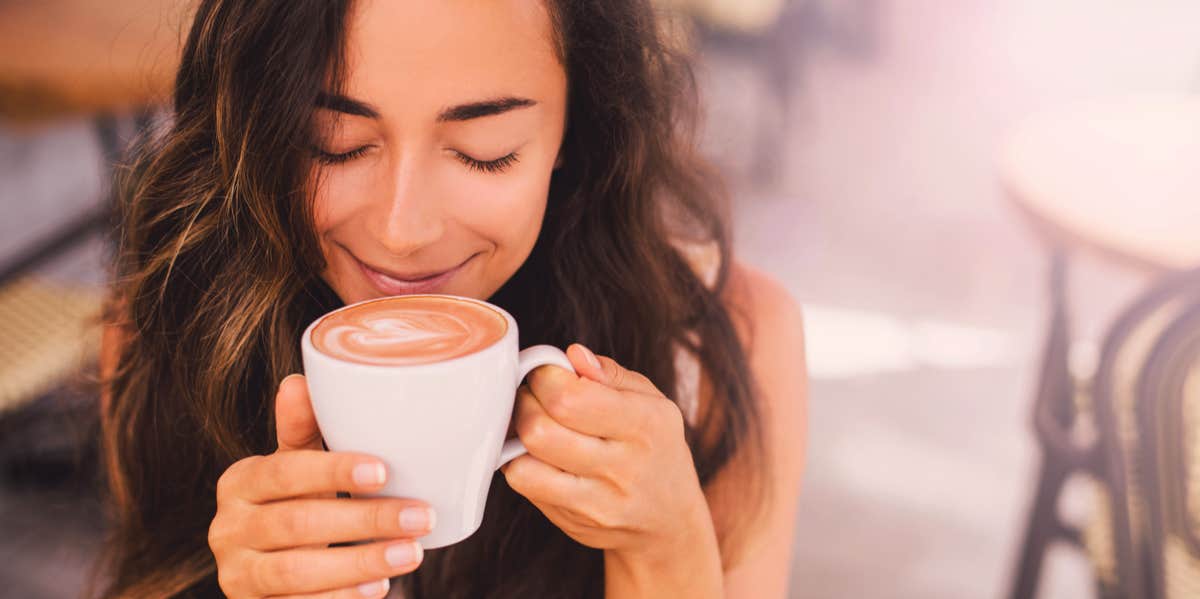The Really Gross Ingredient Secretly Lurking In Your Coffee
There's more to your coffee than meets the eye.
 Polinaloves / Shutterstock
Polinaloves / Shutterstock The best way to determine what is included in your food and drink is to grow it and prepare it yourself. But, let's be honest: Most of us are too busy to do that.
Almost everything we consume is processed in a plant under circumstances we have no knowledge of. We simply buy products and eat or drink them hoping that nothing unsafe or unsanitary is in them.
But what if I told you that your morning cup of Joe contained some pretty interesting, and definitely gross, ingredients?
Well, you might switch to tea after finding out that there are cockroaches in your coffee.
Are there actually roaches in coffee?
The short answer is yes, there are roaches inside of your coffee. However, they might be described as pieces or fragments more than whole insects.
Ground coffee has some unavoidable defects, including bugs, rodents, mold, and other undesirable additives that might just make you want to puke.
The Food and Drug Administration (FDA) is able to establish the maximum level of natural substances that can contaminate food that is used for human consumption.
They believe it is impossible to grow and harvest raw products that are completely free of non-hazardous materials. So, as long as the levels of these foreign things are acceptable to the FDA, we are clear to ingest them.
The Food Defect Levels Handbook shows that some insect pieces getting into foods that have been mass processed is unavoidable. This includes bean coffee and other processed foods.
Douglas Emlen, a professor and biologist at the University of Montana, was interviewed by NPR in 2009 regarding his research on dung beetles.
Emlen had an undergraduate advisor who traveled 45 minutes away to buy freshly ground coffee. After Emlen joked about his habit, the man explained that he could only buy whole beans fresh because he was allergic to cockroaches.
The advisor, George Ichorph, believed that traces of ground up cockroaches were found in coffee that has already been ground.
The FDA’s Microanalytical Procedures Manual (MPM) analyzes trace elements found in food. And, according to the MPM, the claim is based in fact.
How do roaches get into coffee?
Naturally, roaches and other insects are attracted to food they can access. During processing, big piles of coffee beans become infested with cockroaches.
Try as they might, manufacturers are unable to remove all of them, so 4-6% of the insect-infested beans are simply ground up, packaged and sold to consumers.
So it seems the only way to avoid things like bugs, rodent hair, and even feces in your coffee is to get your own fresh green coffee beans and use a coffee grinder to prepare them yourself.
Is it dangerous to ingest these ingredients?
In short, it is safe, although disgusting, to drink the plethora of unwanted edibles sitting at the bottom of your cup of coffee.
According to the FDA, the "presence of any live or dead life cycle stages of insects in a host product, (e.g., weevils in pecans, fly eggs and maggots in tomato products); or evidence of their presence (i.e., excreta, cast skins, chewed product residues, urine, etc.); or the establishment of an active breeding population, (e.g., rodents in a grain silo)" is acceptable within predetermined limits, as these are "natural or unavoidable defects in food" that present no health hazards to humans.”
Now that we understand that we are not just drinking a double tall latte, but are also consuming bug parts, coffee makers, like the convenient Keurig, look a lot better when they are paired with a good grinder.
NyRee Ausler is a writer from Seattle, Washington, and author of seven books. She covers lifestyle and entertainment and news, as well as navigating the workplace and social issues.

